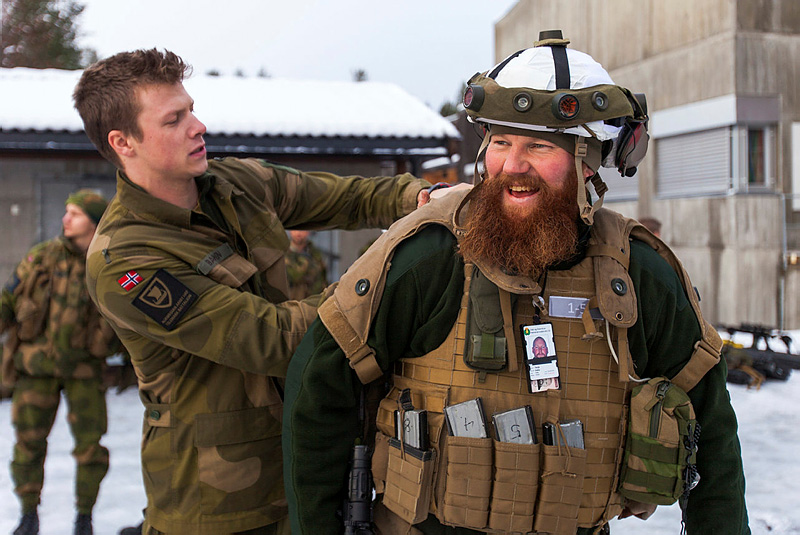Vikings Have Got a Plan
(no votes) |
(0 votes) |
Research Fellow at the Primakov Institute of World Economy and International Relations under the Russian Academy of Sciences, RIAC expert
In November 2016 the Norwegian Parliament—Storting—adopted the Long Term Defense Plan for the Norwegian Armed Forces. The Plan represents a historic increase in defence spending. Among major results, the Government has ordered new American antisubmarine aircraft.
The Long Term Defense Plan akin to a Defense White Paper was approved by the policy makers on November 15. This document completely reflects the aggravated tensions in Europe. It should be noted that the situation in the international security area has got worse if compared to the one in 2012 when the previous Plan was adopted. The most significant change (for the worst) in the Norwegian security environment is Russia’s growing military capability, its use of force to sustain political dominance, and the annexation of Crimea. For now, Russia does not constitute a military threat to Norway, as the country is characterised by stability and international cooperation in the High North development issues (most pending for Norway). Though this doesn’t exclude the fact that such a threat, direct or indirect, would appear in the future. Other kinds of threats are rated as serious challenges to all of NATO and are related to developments in the Middle East and Africa.

Photo: mediearkiv.forsvaret.no
Generally, the Alliance Treaty Obligation is much discussed. The list of tasks for the Norwegian Armed Forces includes the following:
- Ensure credible deterrence based on NATO’s collective defence
- Defend Norway and allies against threats, aggression and attacks, within the framework of NATO’s collective defence
- Prevent and manage incidents and security cases, including the facilitation of allied support
- Ensure the national basis for decision-making through surveillance and intelligence
- Safeguard Norwegian sovereignty and sovereign rights
- Exercise Norwegian authority in designated areas
- Participate in multinational crisis management, including peace operations
- Contribute to international security and defence cooperation
- Contribute to societal security and other key tasks
The overall priorities in Norwegian security and defence policy are to:
- Strengthen national defence
- Strengthen NATO’s ability for collective defence
- Contribute to international crisis management
- Further development of the Total Defense concept
a. Maintain situational awareness and the ability to conduct crisis management operations
b. Improve readiness levels, combat power and survivability
c. Improve the ability to receive allied reinforcements
d. Increase allied military presence and more frequent exercises and training
Actions on the implementation of the above-mentioned tasks are being taken. What has already been stated is an increase in defence costs by USD 860 million in 2020 compared to the 2016 level[2], with the total additional costs for the upcoming 20 years being estimated at USD 19.7 billion.

Photo: United States Department of Defense
US Marines vehicle bunker
In addition to the purchase of 52 F-35 fighter jets—Norway being one of the most active participants of this program, designing a perspective JSM cruise missile for these fighter jets together with the USA—a decision was made to buy 5 P-8A Poseidon maritime patrol aircraft to replace the ageing P-3 Orion. Poseidon might be the best batch-produced maritime patrol aircraft, purchased by the USA, Australia, the UK, and India. The value of the contract is roughly USD 1.15 billion. Along with maritime patrol aircraft, the submarine fleet needs replacement too, and Norway is likely to work with the European manufacturers, moreover, though the purchase of long-range anti-aircraft weapon system is planned in addition to the nationally designed NASAMS. The overriding priority for antiaircraft defence will be the screening protection of the main airbases for alliance reinforcement.
The reinforcement of foreign military presence and the joint exercise issue is also being implemented—starting from 2017, central Norway will host a small contingent of the United States Marine Corps on a rotation basis. On this occasion, the Marine Corps will undergo training in severe winter climatic conditions. Speaking of the Marine Corps, one should remember the legendary (although not widely known) ice caves hidden in the Norwegian fiords, that have been used for storing military hardware, weapons, and equipage for about 15,000 marines in case of a large-scale war between Europe and the USSR since the 1980’s. They have been almost forgotten in the post-Cold war period, with some equipment taken to Middle East conflict areas, but since summer 2014, the bolstering of the arsenal has resumed.

Photo: United States Department of Defense
Norwegian and American tanks during excersices "Cold Response 2016"
1.The common name for the public documents reflecting the plans of the government, e.g. development of military capability. The name dates back to the UK Parliamentary documents, namely the Churchill White Paper of 1922.
2.Defense expenditures in 2016 reached USD 6 billion.
(no votes) |
(0 votes) |




